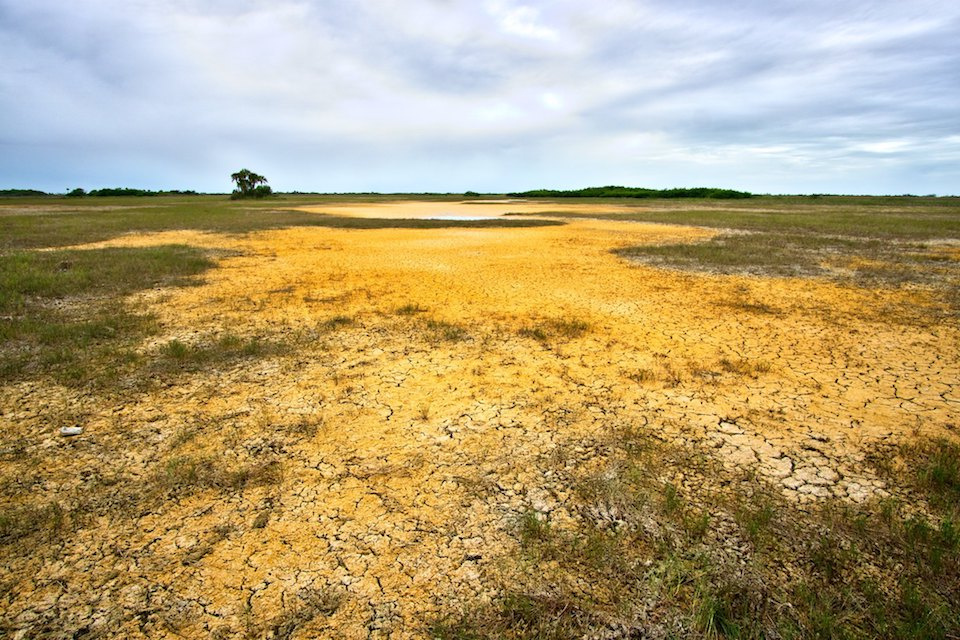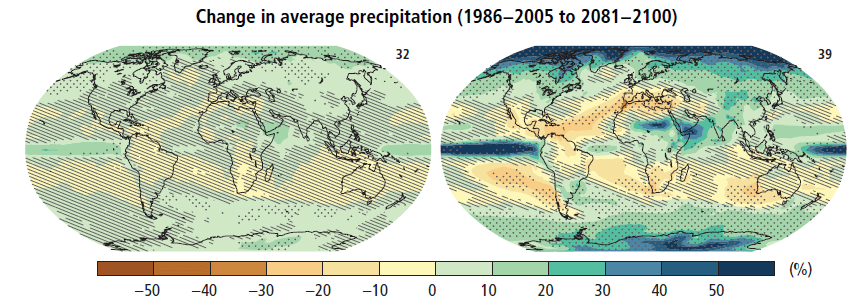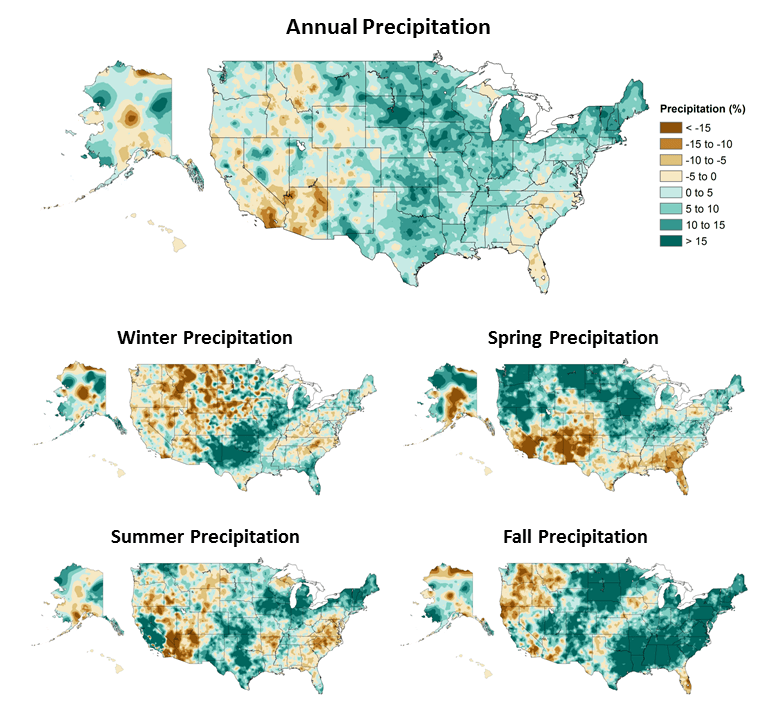- Changes in Precipitation
Climate 101: Changes in Precipitation
Potential temperature and precipitation changes will not be uniform across the earth’s surface.

Various regions, such as high latitudes, are predicted to experience far more warming than others, such as tropical latitudes. Drier mid-latitude and subtropical regions are projected to receive less rainfall, while wetter mid-latitude regions are expected to have an increase in precipitation. Extreme precipitation events are expected to increase in frequency and intensity over most land masses.
It is virtually certain that as global mean temperatures increase there will be more frequent hot and fewer cold temperature extremes over most land areas on daily and seasonal timescales. It is also very likely that heat waves will occur with a higher frequency and duration while, occasional cold winter extremes will continue to occur (IPCC 2014).

Is the climate already changing?
Models of the US, comparing averages from 1901-1960 with averages from 1986-2016, show changes in both annual and seasonal measurements of precipitation.

How are changes in precipitation likely to impact Florida?
Learn more about how precipitation may change in Florida.
What's next?
Learn more about changes in air and water chemistry due to increasing atmospheric carbon dioxide.